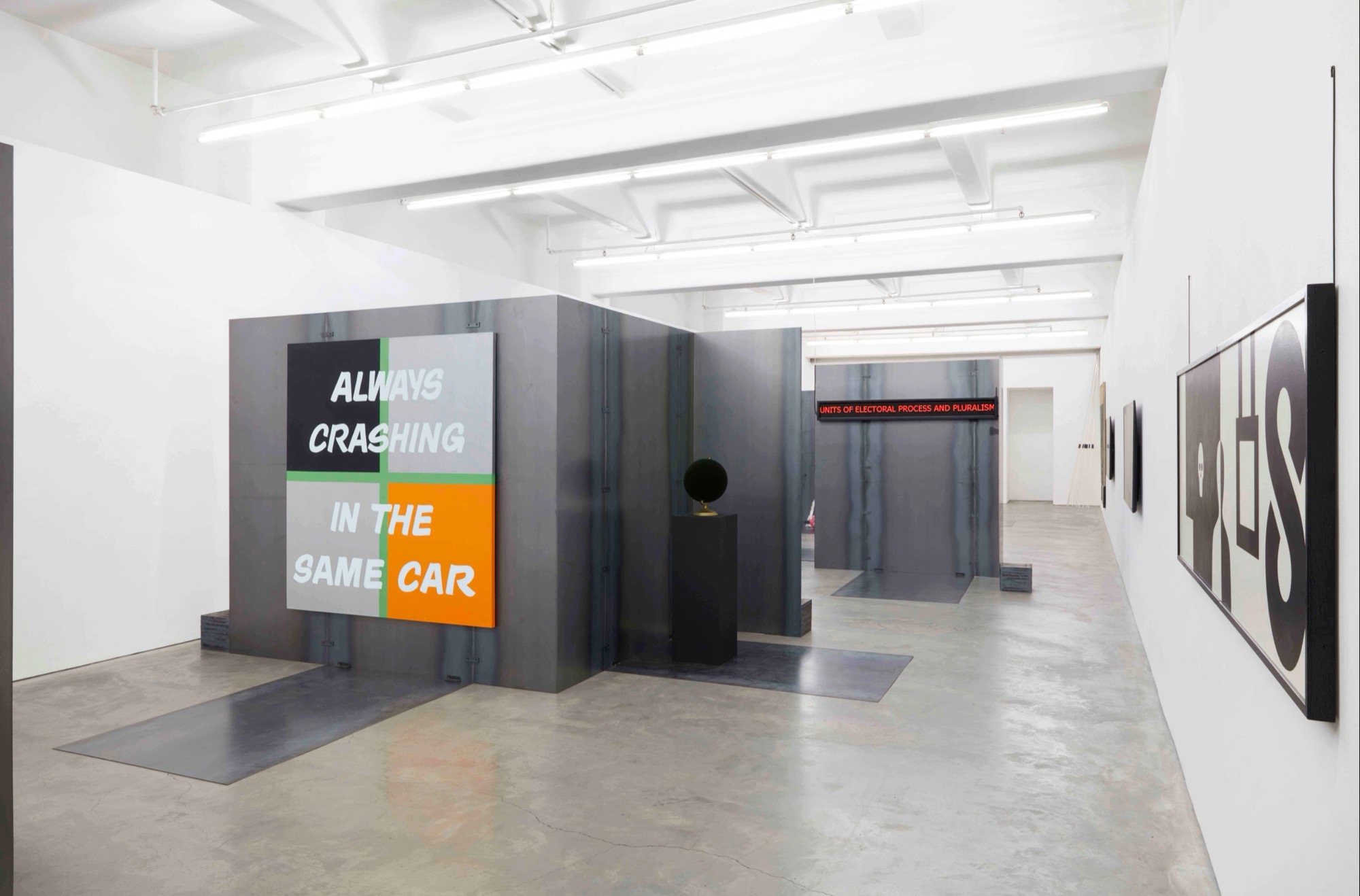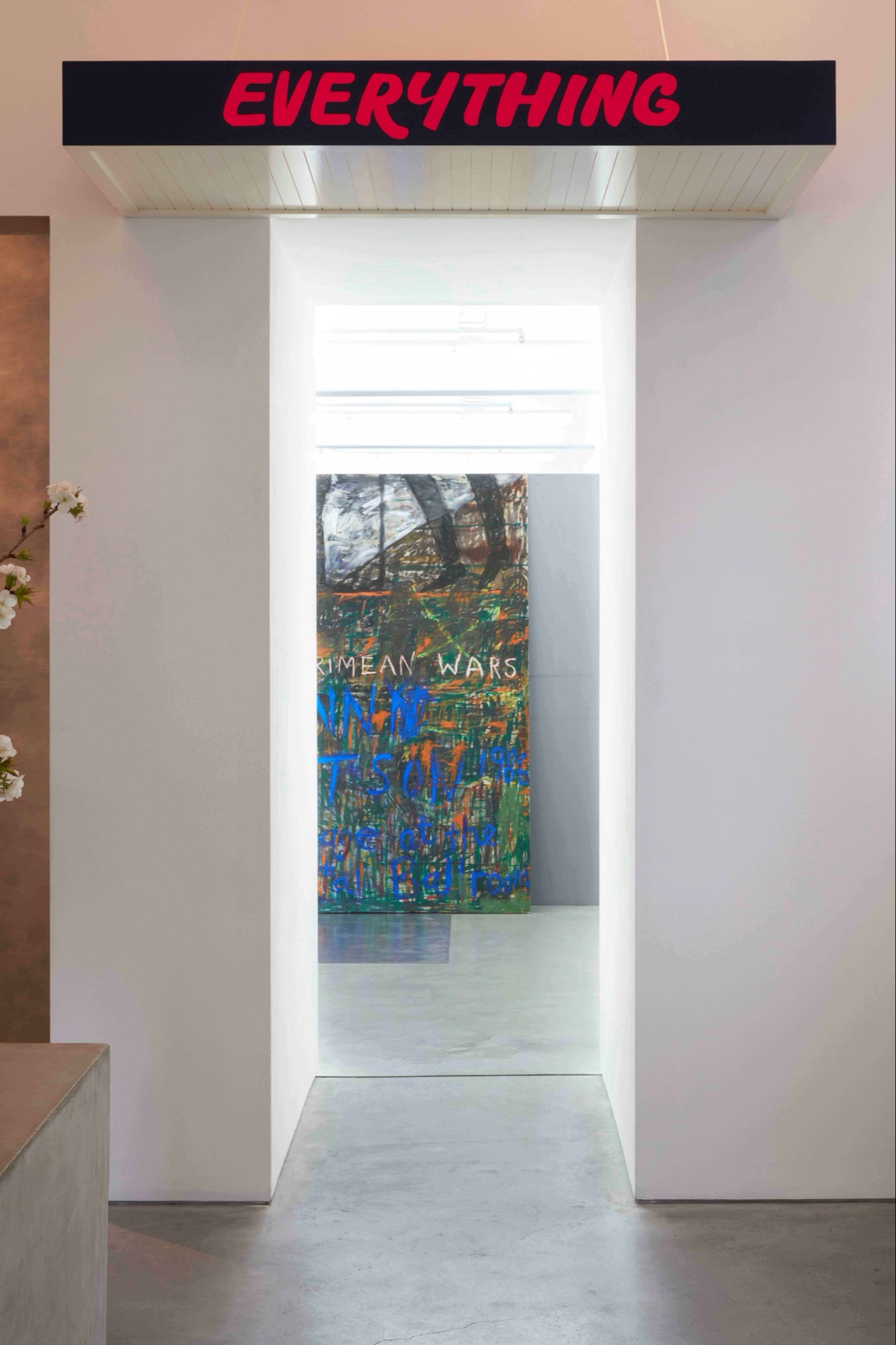Never the same river
Victoria Perin
Part 1: 5 October – 1 November 2019
Part 2: 8 November – 21 December 2019
Never the same river at Anna Schwartz Gallery feels like a birthday party. It is a retrospective of sorts, not of the artists or the gallery even, but of the career of the dealer Anna Schwartz herself. It is a two-part exhibition, the first launching this week and the second launching in early November. 37 years of gallery-stewardship is an odd milestone for such celebratory self-reflection, but the occasion may have been inspired by Doug Hall's long-anticipated history of Schwartz's past galleries, slated to be launched in November this year.
Schwartz began her career working amongst a team of artists in 1982 at United Artists in St Kilda. She has since overseen three subsequent galleries. What began as bohemian co-operation has developed into a central city blue-chip stable. Never the same river is billed as a group show drawing from “the exhibition histories of four galleries”, yet this is not an exhibition about exhibitions, but rather a display held in tension by the central figure of the art dealer.

The most enjoyable moments of the exhibition evoke a perceptible kinship between artists, such as the opening works in the downstairs gallery space: six female Australian artists, all born within six years of each other, are represented by a diversity of works from a large date-range. Jenny Watson's 1986 homage to the ratty Crystal Ballroom, a then-fading St Kilda music venue, abuts Anne Zahalka's haunting domestic drama in Saturday, 2:48pm from 1995. Very close by is a 2017 painting by Vivienne Shark Lewitt, the sweet A penny for your thoughts, which is aggressively held hostage by five glamorous 1989 Bitch cut-outs by the perennially underrated Maria Kozic. These pop-out pin-ups are 30 years old (and they look it), but somehow their intentional, jokey one-dimensionality is braced by the empathic peers that surround them. It is a sketch of a community also visible in the NGV's exhibition Every Brilliant Eye: Australian Art of the 1990s in 2017, but here the artists are permitted to conflict rather than unify in a thematic display of nostalgia, and they are the stronger for it.
These, mostly local, artists are supported throughout by generationally related colleagues: Peter Tyndall (b. 1951) is nearby. Upstairs the artist/gallerist John Nixon provides a bridge to the slightly younger artists associated with the early 1990s artist-run space 'Store 5': Kathy Temin, Kerrie Poliness and Gary Wilson are represented by grungier 'period' works, while others (Callum Morton, Melinda Harper, Stephen Bram) gesture to their current, cleaner practice (the notably absent Rose Nolan is scheduled for 'part 2'). These networks, which speak to the first half of Schwartz's career, are easily identifiable to those with a local memory, I suspect many of the works themselves will also be familiar to regular visitors of the Anna Schwartz Gallery. The exhibition is more 'greatest hits' than 'B-sides and rarities'.

As a writer interested in the narratives of Melbourne's historical artistic networks and creative cliques, I can appreciate these intimacies, but—as befits the remit of the exhibition—this party has additional guests. Other artists who are peripheral to the local heart of the show await around the corners of Denton Corker Marshall's admittedly fabulous exhibition design. Usually maverick and not given to communal comparison, Mike Parr is at his most sedate, balancing with some unobtrusive Patti Smith photographs and Lyndal Jones is represented by her knock-out video work Crying man 3: he must not cry (2003).
The intense, industrial temporary exhibition walls celebrate small and intimate works, and put the squeeze on larger works that normally depend upon the gallery's white walls and deep dimensions. Joseph Kosuth's neon text piece appears diminished, and I get embarrassed by the forced rebellions of Marco Fusianto, Emily Floyd and Jan Nelson's dinky Defiance barricade. Nominally all about political resoluteness and aesthetic resistance, these works, in kissing closeness, wear each other down.

Upstairs, I find myself drawn to certain works but turned off by the associations the curation is suggesting. Works exploring the wet properties of paint all drip together—some I adore, some I do not. A Susan Cohen work is positioned in a heavy-handed relation to a piece by British superstar Yinka Shonibare entirely, as far as I can see, because both are circular. The curation upstairs is dominated by the wafting of Eva Rothschild's Disappearer, which pleasantly fogs incense throughout the space, and Daniel Crooks' characteristically wobbly video that continuously rings out an irritating chime. This varied assortment skews heavily according to personal taste—there is no ideal viewer (except perhaps the gallerist) who will be satisfied by all that is on offer.
Beyond the initial historical chumminess, the exhibition's miscellany keeps drawing you back to the curatorial premise—the only thing truly holding all of these artists in relation is their past or ongoing representation by Schwartz. Beyond the question of whether the currently buzzy “exhibition histories” curatorial strategy is a useful model of art history (and there are vocal critics who doubt that it is), the present exhibition instead asks: can a dealer-history be a useful model of art history?

While Australia seems to be mostly bypassing critical exhibition histories, hefty productions have been put together to examine some institutional spectacles, like the recent The Field palaver, as well as the celebratory tome Australian Art Exhibitions: Opening our Eyes. But do Christopher Heathcote's Inside the Art Market: Australia's Galleries 1956-1976 and Hall's upcoming publication on Schwartz indicate a slide into Australian dealer-histories? I can easily imagine a gossipy book on the journey of Rudy Komon's extravagantly inconsistent business. I am shocked that there isn’t a book articulating the enormous significance of the Watters Gallery in Australia art.
Ann Stephen's 1969: The black box of conceptual art (devoted to the 1969 Ian Burn, Mel Ramsden and Roger Cutforth exhibition sent from New York to Melbourne's Pinacotheca Gallery) identifies the ideal disruptive goal of exhibition histories, one where 'the evidence of the work exposes a much more confusing picture in which artist is pushed against the apparent governing parameters of modernist art, particularly modernist painting, to achieve a different space for art'. At its best the 'exhibition history' is a model that bypasses the hegemony of history told through single-artist monographs, or the reductive paradigms of art movements in which artists are squeezed into historically fixed in “-isms”, styles, or manifestos. An exhibition history should trace individuals as they coalesce to reveal their art to an audience. The curator is an important figure in these stories, but the curator-role should be understood as contingent upon the experience of the artists and the revelation of the artworks.

As Ramsden muses in his interview with Stephen for the 1969 catalogue:
When curators look at art and see only more curating we have to question what is being spread and expanded—and expanded to the point where it's almost impossible to see anything outside the goals of managerial power. In fact, some have recently suggested that the art world itself can best be understood not in Alfred Barr timelines but as the expanding amoeba-like thing in the 1958 film 'The Blob'. The present exhibition obviously lives in this same stressful place.
At its best Never the same river manifests a dealer-history of the generational ties underpinning the artists and works. At its worst, you might feel like you are stuck with the dud party-guest; you don't like them, but the host does, so you smile politely and move along. But if you designate this self-celebration a historically 'stressful place', the space to critique a blobby, managerial art-history will have to be made elsewhere. “I run the gallery I want to run, I work with the artists I want to work with,” goes the calculation that Schwartz has outlined in the past. It’s the Anna Schwartz Gallery's 37th birthday—we are just crashing it.
Victoria is a completing her PhD at the University of Melbourne. Her research concerns printmaking in Melbourne during the 1960s, 70s and 80s. In 2013, she was the Gordon Darling Intern in the Australian Prints and Drawings Department at the National Gallery of Australia.


